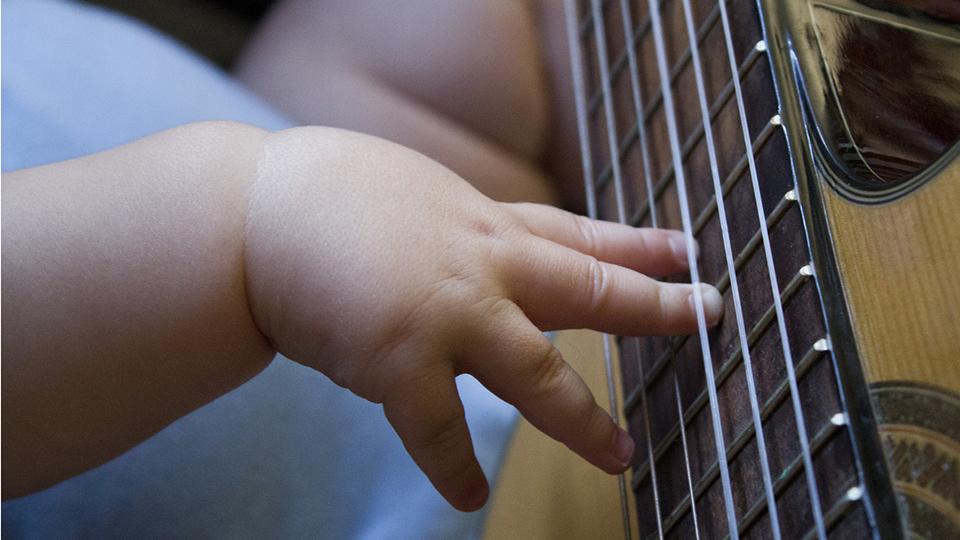Even young babies can tell if touch and sound go together
Primary page content
Babies as young as four months can tell if touches and sounds are coming from the same place, researchers from Goldsmiths, University of London have found.

Overall, the study shows that from four months of age babies have learned that touches and sounds often occur at the same location – for instance from banging a toy on a surface.
The research also revealed that while four-month-old babies pay more attention to touches and sounds happening in the same place six-month-olds are more interested in where they happen in different locations. This suggests that by six months babies have become increasingly experienced at locating touches and sounds so that, for them, spatially separate events are more surprising and more interesting.
The study, reported in Developmental Science, gives an insight into the early development of infants’ perceptions of their own bodies and how they relate sensations to the world around them.
For the study 14 four-month-olds and 14 six-month-olds wore scratch mittens fitted with a small speaker that made a noise as well as a vibrating coil device which produced a touch sensation secured to their palms with self-adhesive bandages. While sat on a carer’s lap, they heard pulses of sound and simultaneously felt vibrations that might occur together on one hand or separately on each hand. The four-month-olds were found to look consistently longer when sounds and vibrations occurred together on the same hand while the six-month-olds looked longer when sounds or vibrations occurred on separate hands.
Professor Andy Bremner, Head of Psychology at Goldsmiths and co-author, said: “Being able to locate touches and sounds together in the outside world is something which we take for granted as adults but, as babies, we likely have to learn to do this.
“Our results suggest that even four-month-old babies are able to perceive that touches and sounds are coming from the same place. By six months they appear able to differentiate between where touches and sounds are happening together at the same location and where they are happening at the same time but in different places.”
The work was done in collaboration with researchers from Oxford University and builds on previous Goldsmiths research which showed that, at six months, babies can tell whether or not touches and sights are coming from the same place.
Professor Bremner said: “There’s a lot we still don’t know about how young babies perceive the world through touch and sound, for instance it is unclear whether six-month-olds perceive spatially separate touches and sounds as a single event or as two separate events. It’s also possible that this sensitivity to touches and sounds coming from the same place stretches back earlier than four months, perhaps even before birth.”
According to the team the research is the first step in exploring how babies perceive multisensory events combining touch and sound: abilities that underpin our developing understanding of our own bodies in the world.
Image: Quinn Dombrowski